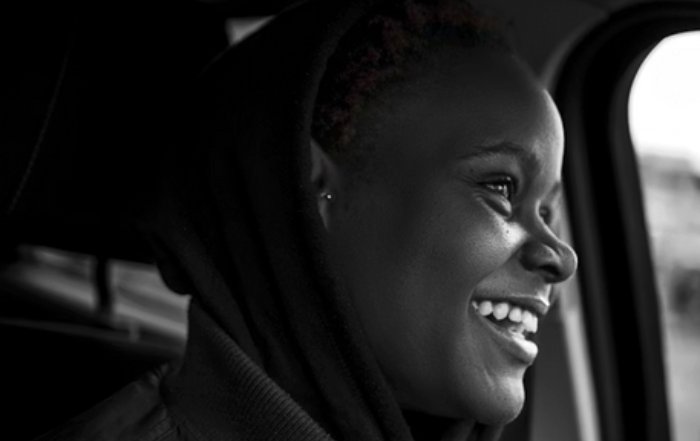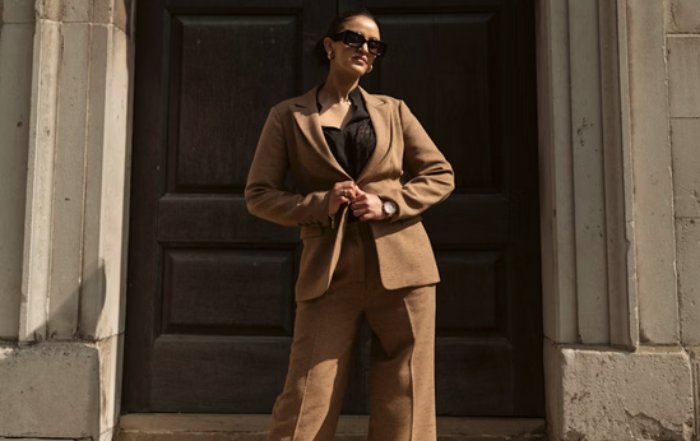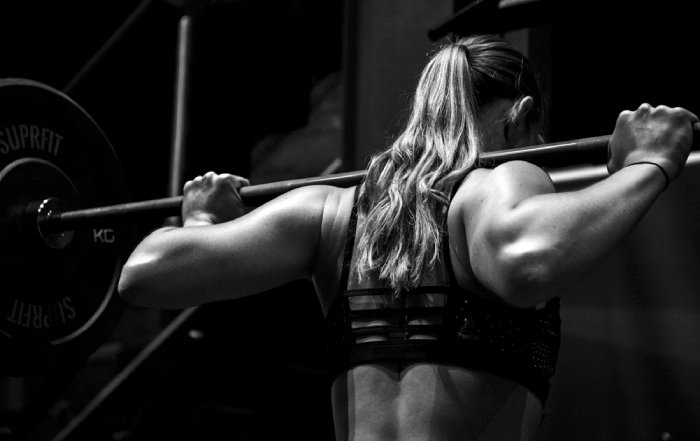Food Trends That Reflect Women's Changing Lives
A New Era of Food, Power, and Possibility
By 2025, the global food landscape has become a mirror reflecting the evolving roles, aspirations, and pressures in women's lives. Across North America, Europe, Asia, Africa, and South America, women are no longer just primary household food decision-makers; they are founders of high-growth food startups, policy shapers in nutrition and sustainability, cultural tastemakers on social media, and executives transforming legacy food corporations. The food trends emerging today are not simply about taste or convenience; they are deeply intertwined with women's economic power, time scarcity, mental load, health priorities, and environmental values. For HerStage, whose community spans women in leadership, lifestyle, wellness, and career, understanding these trends is essential to understanding how modern womanhood is being redefined in kitchens, boardrooms, and digital spaces.
As women in the United States, the United Kingdom, Germany, Canada, Australia, France, Italy, Spain, the Netherlands, Switzerland, China, Sweden, Norway, Singapore, Denmark, South Korea, Japan, Thailand, Finland, South Africa, Brazil, Malaysia, New Zealand and beyond navigate demanding careers, caregiving responsibilities, and personal ambitions, their food choices increasingly reflect a strategic approach to energy, time, identity, and impact. The rise of functional foods, precision nutrition, sustainable eating, and tech-enabled convenience reveals a story of women asserting control over their bodies, their schedules, and their values. On HerStage, where conversations on women's lives, career growth, leadership, and lifestyle choices intersect, food is emerging as a powerful lens for exploring experience, expertise, authoritativeness, and trustworthiness in a rapidly changing world.
Time, Labor, and the Rebalancing of the Modern Kitchen
One of the most powerful drivers behind contemporary food trends is the persistent imbalance of unpaid domestic labor. Research from organizations such as UN Women has consistently shown that women, even when employed full-time, still perform a disproportionate share of cooking, grocery shopping, and meal planning. As more women in regions like North America, Europe, and Asia pursue demanding careers and entrepreneurial ventures, the tension between professional ambition and domestic expectations has become a catalyst for innovation in how food is sourced, prepared, and consumed. Services that were once considered luxuries, such as meal kits and prepared foods, are now reframed as strategic tools that enable women to reclaim time and cognitive bandwidth.
The surge in meal delivery platforms and ready-to-cook solutions reflects this shift. Companies like HelloFresh and Blue Apron helped normalize meal kits in the United States and Europe, while Asian markets have seen rapid growth in app-based grocery delivery and semi-prepared ingredients that reduce cooking time without sacrificing cultural authenticity. At the same time, global insights from sources such as the World Economic Forum highlight how automation, logistics, and data are reshaping consumer access to food, particularly in urban centers from London and Berlin to Singapore and Seoul. For many women, the choice to outsource parts of the cooking process is not about disengagement from family life, but about renegotiating gendered expectations and investing limited time in higher-value activities, whether that means career advancement, rest, or personal development explored through platforms like HerStage's self-improvement features.
In parallel, there is a growing cultural conversation about the invisible planning work behind food, often called the "mental load." Women are increasingly vocal about the emotional and cognitive burden of constantly anticipating meals, managing household preferences, and tracking dietary needs. This has fueled interest in tools such as AI-powered meal planners, smart kitchen devices, and grocery apps that automate decision-making. The integration of voice assistants with grocery lists, smart refrigerators that monitor inventory, and nutrition-tracking apps is not just a story about technology; it is a story about women leveraging digital infrastructure to redistribute labor and protect their energy for leadership, creativity, and rest.
Functional Foods and the Pursuit of Sustainable Energy
As women's lives become more complex and fast-paced, food is increasingly seen as a form of strategic fuel rather than a simple source of calories. In 2025, one of the most significant trends is the rise of functional foods: products designed to support specific outcomes such as better focus, hormonal balance, gut health, immunity, or stress resilience. This shift is particularly pronounced among women balancing careers in cities like New York, London, Berlin, Toronto, Sydney, Paris, Milan, Madrid, Amsterdam, Zurich, Shanghai, Stockholm, Oslo, Singapore, Copenhagen, Seoul, Tokyo, Bangkok, Helsinki, Johannesburg, São Paulo, Kuala Lumpur, and Auckland, where long commutes, digital overload, and hybrid work environments create constant demands on physical and mental stamina.
Scientific organizations such as the National Institutes of Health and the European Food Safety Authority have fueled public awareness of the connections between diet, microbiome health, inflammation, and chronic disease risk, encouraging more women to explore fermented foods, high-fiber diets, and nutrient-dense ingredients. The explosion of probiotic drinks, adaptogenic snacks, and brain-boosting beverages demonstrates how wellness culture has merged with convenience. Brands emphasize ingredients like ashwagandha, lion's mane mushroom, omega-3s, and magnesium, promising better sleep, reduced anxiety, and improved cognitive performance. While not all claims are equally supported by evidence, a more health-literate female consumer base is asking sharper questions, comparing research, and seeking guidance from trusted medical sources such as the Mayo Clinic and Cleveland Clinic.
Within the HerStage community, where health, mindfulness, and career resilience are recurring themes, functional foods resonate strongly with women who see nutrition as a foundational part of sustainable success. Instead of crash diets or short-term cleanses, there is growing interest in long-term, evidence-based strategies that support hormonal health across life stages, from menstruation and fertility to perimenopause and beyond. Women in leadership roles increasingly discuss how stable energy, mental clarity, and emotional balance are not luxuries but prerequisites for effective decision-making and inclusive leadership, making food a strategic asset in boardrooms and entrepreneurial ecosystems.
Precision Nutrition and the Era of Personalization
The last decade has seen an acceleration in precision nutrition, with DNA-based testing, microbiome analysis, continuous glucose monitoring, and personalized meal plans becoming more mainstream. For women, whose nutritional needs vary widely across age, reproductive status, and cultural context, this shift toward personalization is particularly transformative. No longer satisfied with generic guidelines, women are turning to digital platforms, health-tech startups, and medical professionals to create nutrition plans tailored to their unique physiology and goals.
Organizations such as the World Health Organization and Harvard T.H. Chan School of Public Health have helped shape public understanding of how nutrition intersects with noncommunicable diseases, reproductive health, and mental well-being. Building on this foundation, tech-driven companies are using wearable devices and data analytics to offer real-time feedback on how specific foods affect blood sugar, sleep quality, and mood. For women managing conditions such as polycystic ovary syndrome, endometriosis, autoimmune disorders, or perimenopausal symptoms, this level of insight represents a form of agency that was previously unavailable.
On HerStage, where education and empowerment are central, the rise of precision nutrition aligns with a broader shift from prescriptive wellness narratives to individualized, evidence-informed strategies. Women in Germany, Sweden, Norway, Denmark, and Finland, where public health infrastructures and digital health adoption are strong, have been early adopters of such technologies, while women in the United States, Canada, the United Kingdom, and Australia are leveraging private-sector innovation and employer wellness programs. The trend is also expanding across Asia, with women in South Korea, Japan, Singapore, and China integrating traditional dietary wisdom with contemporary data-driven insights, demonstrating how personalization does not erase culture but can deepen it.
However, the promise of precision nutrition also raises questions of accessibility, equity, and data privacy. Industry analysis from sources such as McKinsey & Company and Deloitte highlights the risk that high-cost personalized solutions may primarily benefit affluent, urban women, widening health disparities. For a platform like HerStage, which addresses a global audience across income levels and regions, the challenge is to spotlight tools and knowledge that can be adapted to different contexts, encouraging women to ask critical questions about evidence, bias, and commercial interests while still embracing the empowerment that personalization can offer.
Conscious Eating, Sustainability, and Ethical Power
Food trends in 2025 cannot be understood without acknowledging the climate crisis, biodiversity loss, and growing concerns about food system resilience. Women are at the forefront of a global movement toward more sustainable and ethical eating, driven by a combination of environmental consciousness, concern for animal welfare, and awareness of social justice issues across supply chains. Reports from organizations such as the Food and Agriculture Organization of the United Nations and the Intergovernmental Panel on Climate Change have made it clear that what ends up on our plates has profound implications for land use, water consumption, and greenhouse gas emissions.
In response, women in cities from Los Angeles to London, Berlin to Barcelona, Cape Town to São Paulo, and Bangkok to Tokyo are experimenting with plant-forward diets, regenerative agriculture, and low-waste cooking. The rise of flexitarianism allows women to balance cultural traditions and personal preferences with climate-aware decisions, leading to a proliferation of plant-based proteins, alternative dairy products, and creative vegetable-centric cuisine. Many are learning more about sustainable business practices through resources such as UN Global Compact, and they are increasingly holding food brands accountable for transparency on sourcing, labor conditions, and environmental impact.
On HerStage, where business, world affairs, and lifestyle intersect, this conscious shift is seen not just as a dietary preference but as an expression of leadership and values. Women entrepreneurs are founding sustainable food companies, zero-waste grocery stores, and climate-smart agriculture ventures, using their expertise to reshape supply chains and consumer expectations. Meanwhile, women in corporate roles are pushing established multinationals to adopt science-based climate targets, invest in regenerative farming, and reduce plastic packaging, translating personal ethics into institutional change.
The trend toward conscious eating also extends to localism and food sovereignty, particularly in regions where women have historically been central to agriculture and food culture. In parts of Africa, Asia, and Latin America, women-led cooperatives are reviving indigenous crops, traditional fermentation techniques, and community-supported agriculture models, demonstrating that sustainability is not a Western invention but a continuation of long-standing knowledge systems. For the HerStage audience, these stories offer both inspiration and practical guidance, showing how global women's leadership in food can be rooted in heritage while oriented toward the future.
Beauty, Wellness, and the Aestheticization of Eating
Another striking development is the merging of food, beauty, and glamour into a single aesthetic ecosystem. Social media platforms have amplified visually striking foods, from colorful smoothie bowls and matcha lattes to intricate bento boxes and artful plant-based dishes, transforming everyday meals into aspirational content. For women active in fashion, beauty, and lifestyle spaces, food has become both a creative outlet and a branding tool, reinforcing personal narratives around health, success, and self-care.
The beauty-from-within trend, which emphasizes ingestible beauty products such as collagen powders, skin-supporting vitamins, and antioxidant-rich beverages, has grown significantly, particularly among women in the United States, Europe, and East Asia. Resources like Allure and Vogue regularly feature discussions on how diet affects skin health, hair strength, and aging, while dermatologists and nutritionists provide guidance on separating marketing hype from scientifically grounded advice. Women are increasingly discerning, cross-checking claims with medical and scientific sources, and demanding transparency about ingredient quality and clinical evidence.
For HerStage, which explores beauty, glamour, and fashion alongside health and self-improvement, this convergence offers an opportunity to frame food not merely as a path to external appearance but as a holistic contributor to confidence, vitality, and presence. Women in leadership and public-facing roles are increasingly candid about the pressures of appearance and the importance of nourishing themselves in ways that support long-term well-being rather than short-term aesthetic goals. This nuanced perspective encourages readers to view food as a form of self-respect and resilience, rather than a tool of restriction or punishment.
Global Flavors, Cultural Identity, and Culinary Confidence
Globalization, migration, and digital media have created unprecedented access to diverse cuisines, and women are using this access to explore identity, heritage, and creativity through food. In 2025, one of the most dynamic trends is the celebration of regional and diasporic flavors, from West African jollof rice and Ethiopian injera to Korean kimchi, Mexican mole, Indian chaat, Middle Eastern mezze, and Nordic rye breads. Food media platforms, including those with international reach such as BBC Good Food and Bon Appétit, have amplified this diversity, while social platforms give home cooks and micro-influencers the power to share family recipes and culinary innovations with global audiences.
Women across continents are reclaiming culinary traditions that may have been marginalized or simplified in mainstream narratives, asserting pride in flavors, techniques, and ingredients that reflect their cultural histories. This reclamation intersects with conversations about representation, inclusion, and power, as women chefs, writers, and entrepreneurs challenge stereotypes and expand the definition of what constitutes "gourmet" or "elevated" cuisine. In Europe and North America, women of color in particular are reshaping food media and restaurant culture, while in Asia, Africa, and Latin America, women are modernizing street food, home cooking, and regional specialties for contemporary urban audiences.
For the HerStage readership, which spans continents and cultures, this global flavor movement is more than a trend; it is a form of storytelling and connection. Food becomes a medium through which women in different regions can recognize shared experiences of migration, resilience, and creativity. As they experiment with recipes discovered online or in international cookbooks, they also gain confidence in their own ability to adapt, improvise, and express themselves. This culinary confidence often extends into other domains, reinforcing leadership skills, entrepreneurial courage, and a willingness to take risks in business and career decisions.
Mental Health, Mindful Eating, and Emotional Resilience
The growing attention to mental health over the past decade has profoundly influenced how women approach food. In many countries, the pandemic years exposed the fragility of work-life boundaries and intensified stress, anxiety, and burnout, particularly among women juggling caregiving, remote work, and financial uncertainty. By 2025, there is a heightened awareness of the emotional dimensions of eating, from stress snacking and emotional comfort foods to disordered eating patterns linked to perfectionism and societal pressures.
Psychological and medical institutions such as the American Psychological Association and NHS have contributed to public understanding of how nutrition intersects with mood, cognition, and mental health disorders. Concepts like mindful eating, intuitive eating, and trauma-informed nutrition have gained traction, encouraging women to rebuild a compassionate relationship with food that honors hunger cues, emotional needs, and bodily autonomy. Rather than framing food choices in rigid moral terms of "good" and "bad," there is a growing emphasis on curiosity, awareness, and self-kindness.
On HerStage, where mindfulness, health, and self-improvement are core themes, this shift toward mindful and emotionally intelligent eating resonates deeply. Women leaders and professionals, especially in high-pressure environments in the United States, United Kingdom, Germany, Canada, Australia, and across Asia, are recognizing that sustainable performance requires not only physical nourishment but also psychological safety and emotional regulation. Food rituals, from shared family meals to solo tea breaks, are being reframed as anchors of stability and presence in otherwise hectic days, providing a counterbalance to constant digital stimulation and multitasking.
Women as Food Innovators, Educators, and Policy Shapers
Behind every visible food trend lies an ecosystem of innovators, educators, and policymakers, many of whom are women. Female founders are driving new ventures in alternative proteins, upcycled foods, food waste reduction, and climate-smart packaging, often backed by impact investors who recognize the intersection of sustainability, health, and profitability. Analysts at organizations such as PwC and EY have noted the growing influence of women-led startups in the food and beverage sector, particularly in markets like the United States, United Kingdom, Germany, the Netherlands, and Singapore, where innovation ecosystems and venture capital networks are robust.
At the same time, women scientists, nutritionists, and public health experts are shaping guidelines and educational campaigns that influence how entire populations eat. Academic institutions and public agencies in Europe, North America, and Asia are increasingly highlighting female researchers' contributions to understanding topics such as gut-brain interactions, sustainable diets, and maternal and child nutrition. Their work informs school meal programs, healthcare recommendations, and corporate wellness policies, ensuring that future food systems are more inclusive, evidence-based, and responsive to women's needs across life stages.
For HerStage, which positions itself at the intersection of education, business, and world affairs, spotlighting these women is central to building a culture of trust and authority. By amplifying voices that combine rigorous expertise with lived experience, the platform helps readers navigate a crowded and often confusing food marketplace. Whether a reader in Johannesburg is considering plant-based options for her family, a professional in Tokyo is exploring functional snacks for better focus, or an entrepreneur in São Paulo is building a sustainable food brand, the stories of women leading change offer both guidance and validation.
What These Trends Mean for HerStage and Its Global Community
Taken together, the food trends of 2025 reveal a profound truth: as women's lives change, so does the meaning of food. It is no longer merely a domestic responsibility or a lifestyle accessory; it is a strategic resource, a form of self-expression, a vehicle for ethical action, and a platform for leadership. For the global community of HerStage, spanning continents and cultures, this evolution presents both opportunities and responsibilities. Readers are not passive consumers of trends; they are co-creators, innovators, and decision-makers whose choices ripple through families, companies, and societies.
By exploring food through lenses of time, labor, health, sustainability, beauty, culture, mental well-being, and innovation, HerStage strengthens its role as a trusted guide for women navigating complex modern lives. The platform's focus on holistic lifestyle, from lifestyle insights and career growth to health, beauty, and self-improvement, allows it to connect food choices with broader questions of identity, power, and purpose. As women in the United States, United Kingdom, Germany, Canada, Australia, France, Italy, Spain, the Netherlands, Switzerland, China, Sweden, Norway, Singapore, Denmark, South Korea, Japan, Thailand, Finland, South Africa, Brazil, Malaysia, New Zealand and across the globe continue to redefine success on their own terms, their food stories will remain a vital, revealing, and inspiring part of that journey.
In this moment, food becomes a living archive of women's changing lives: a record of how they negotiate time and care, how they claim authority over their bodies and futures, how they align daily choices with global challenges, and how they build communities of support and inspiration. For HerStage and its readers, paying attention to these trends is not merely about staying current; it is about recognizing food as a powerful stage on which women's evolving roles, ambitions, and values are performed, challenged, and celebrated.










